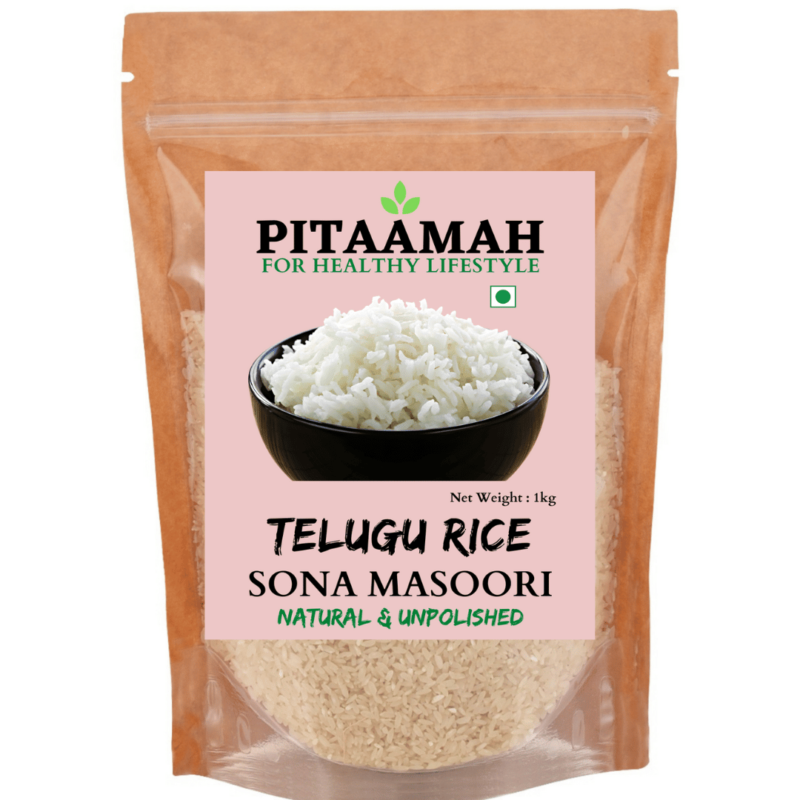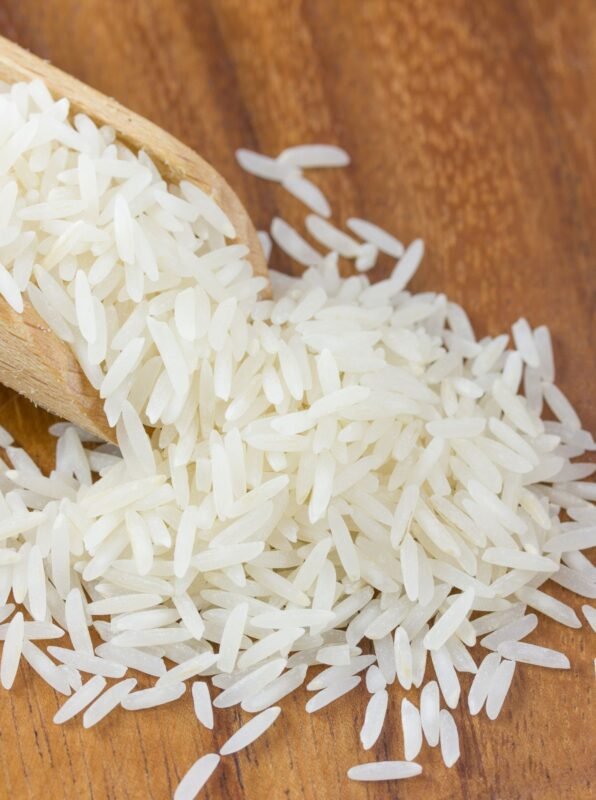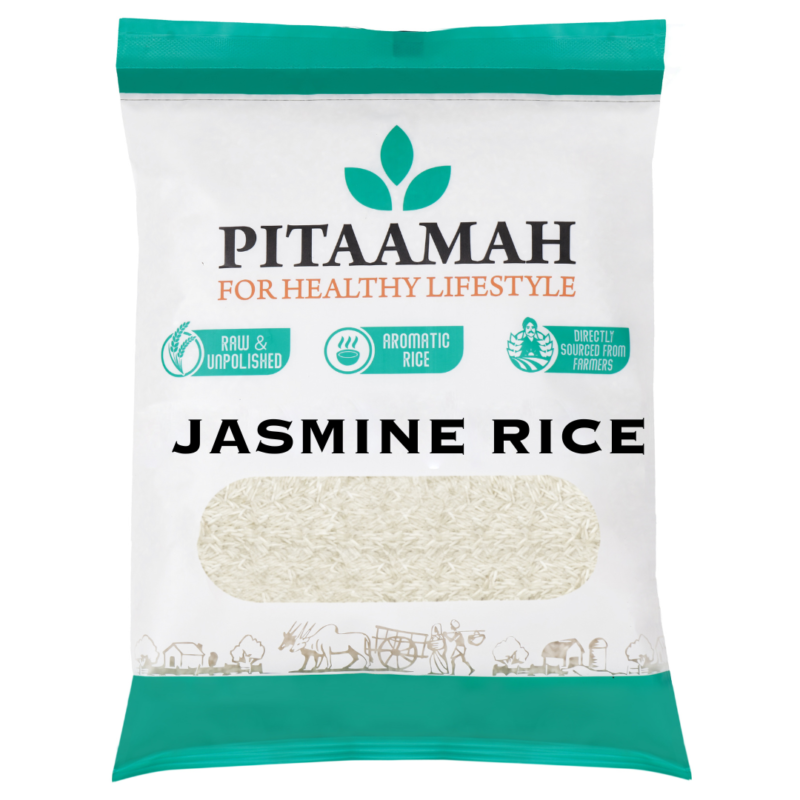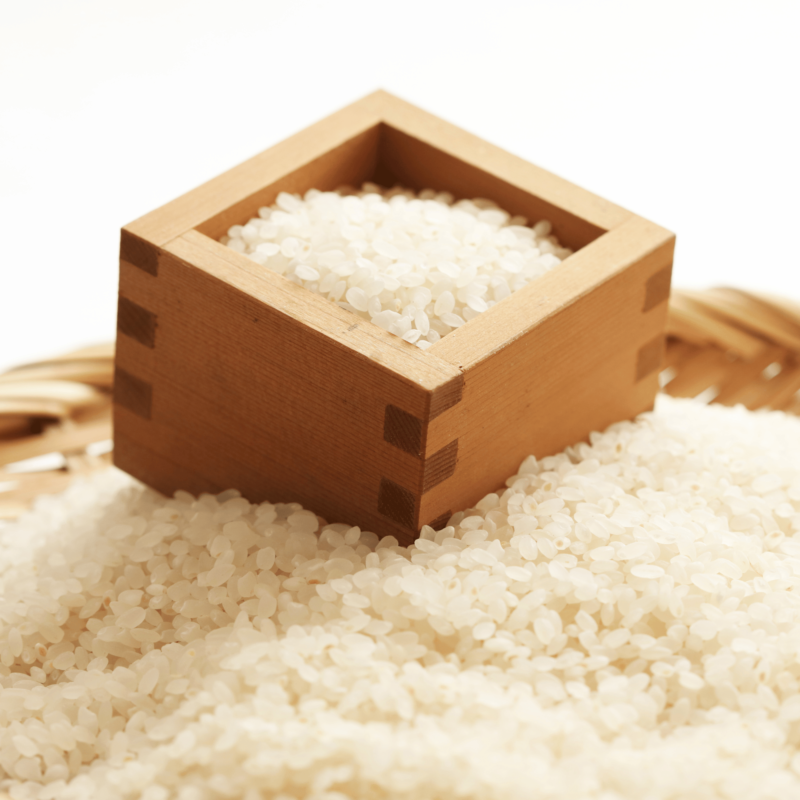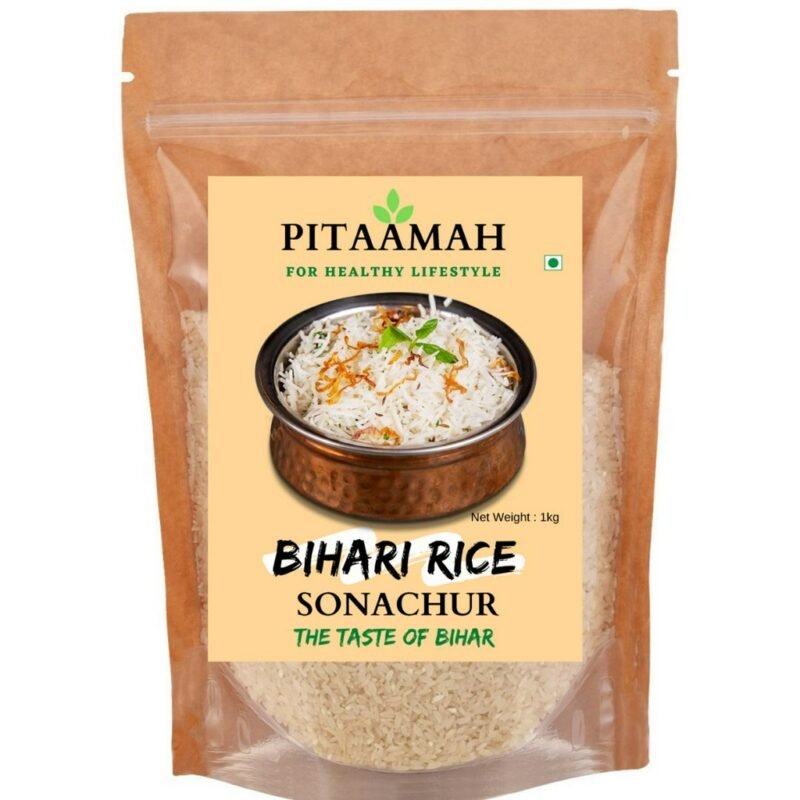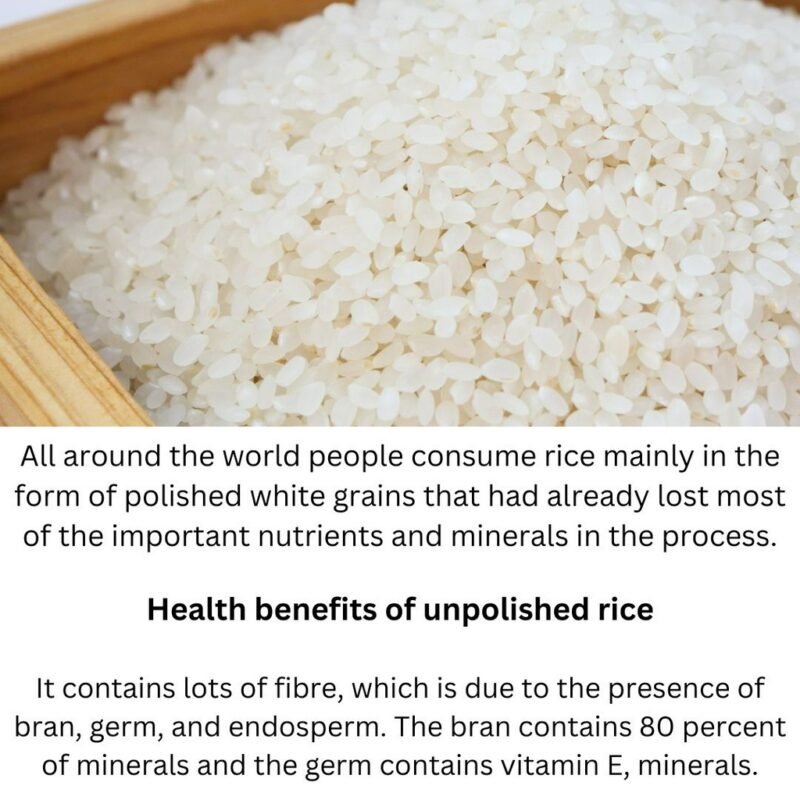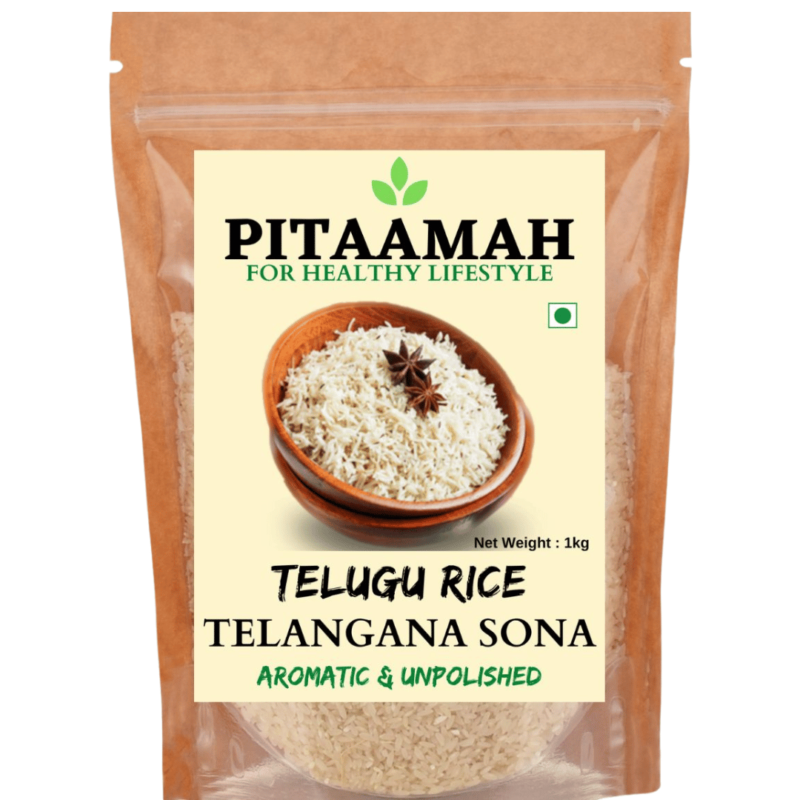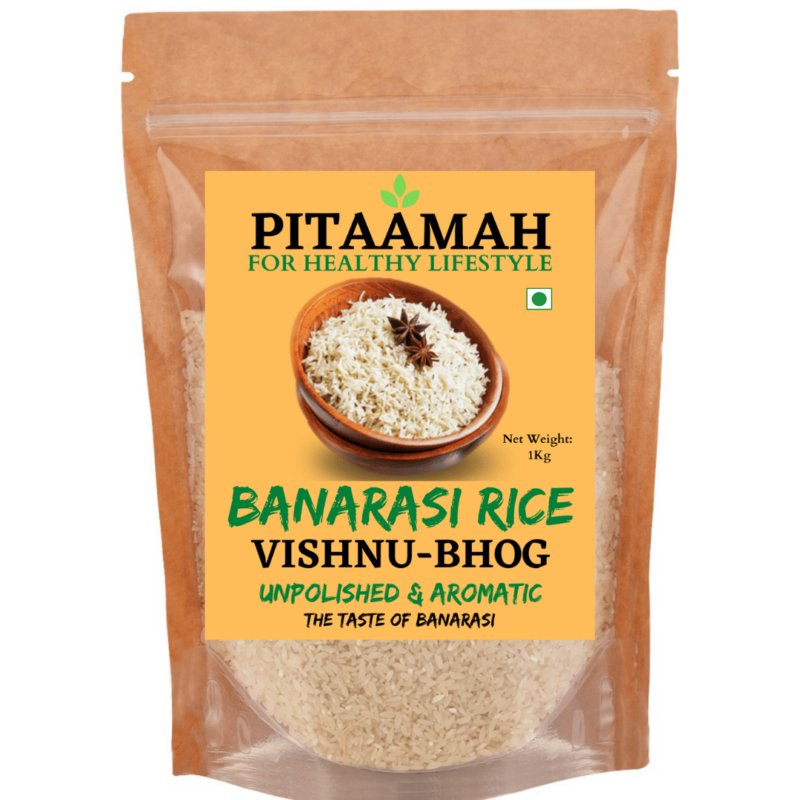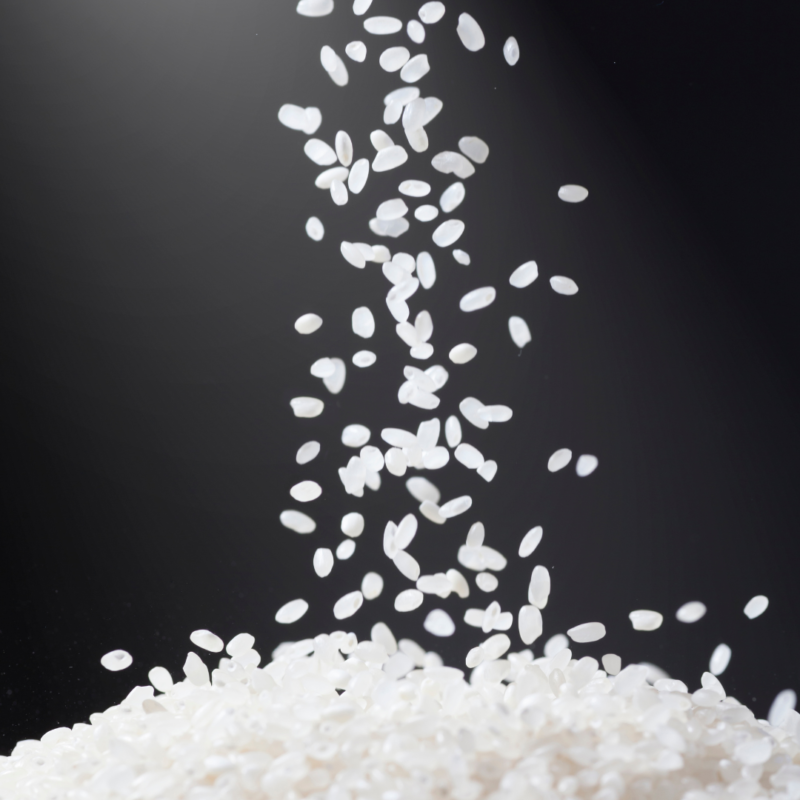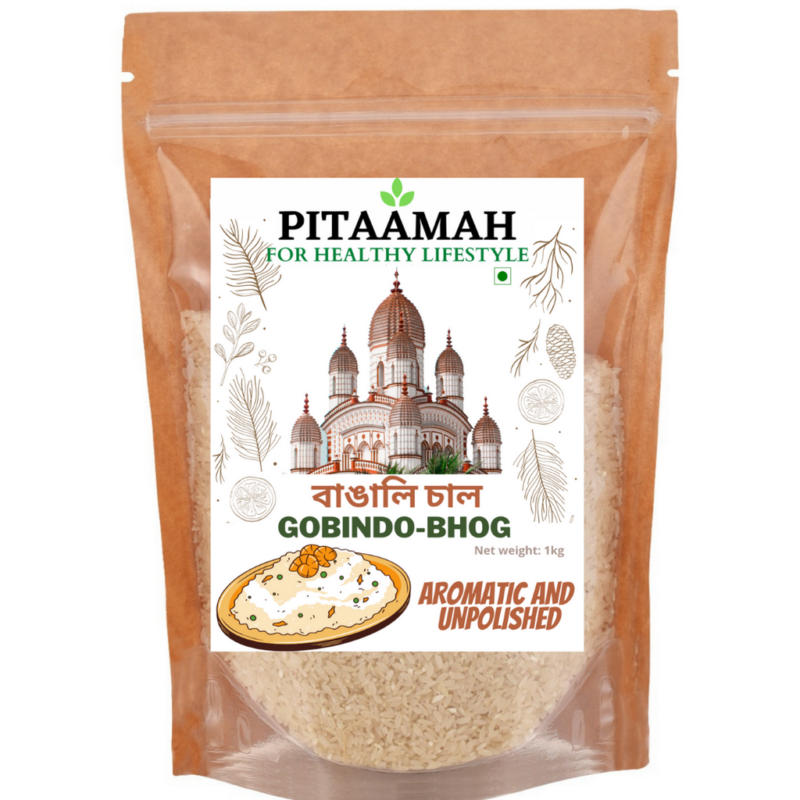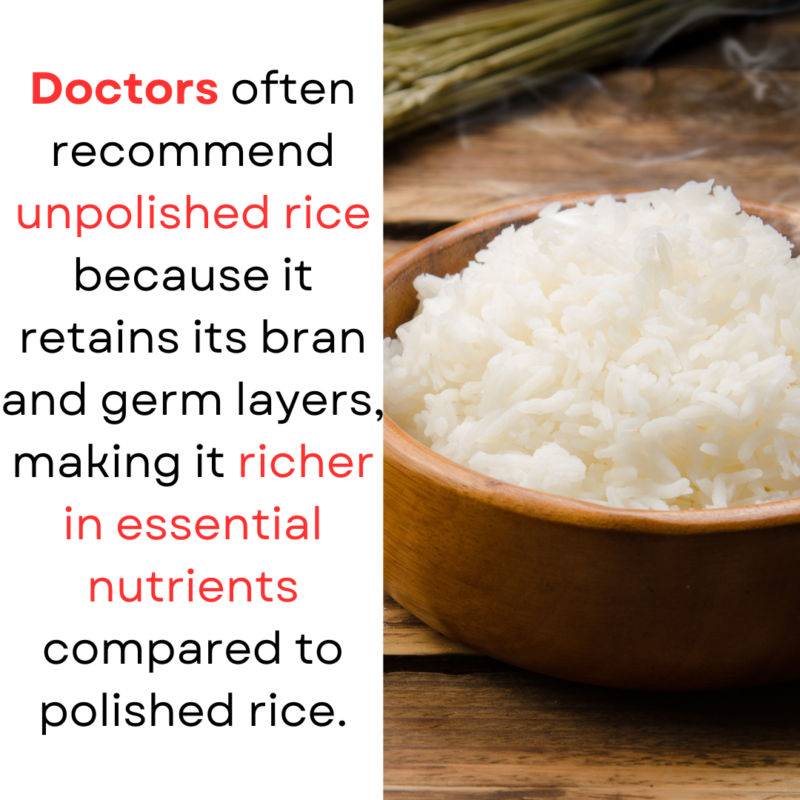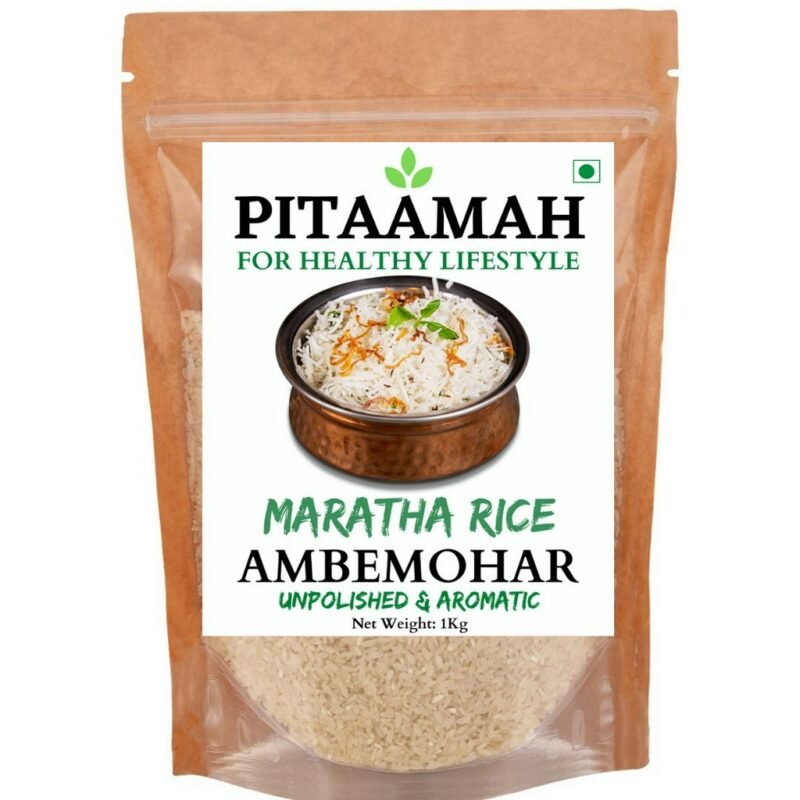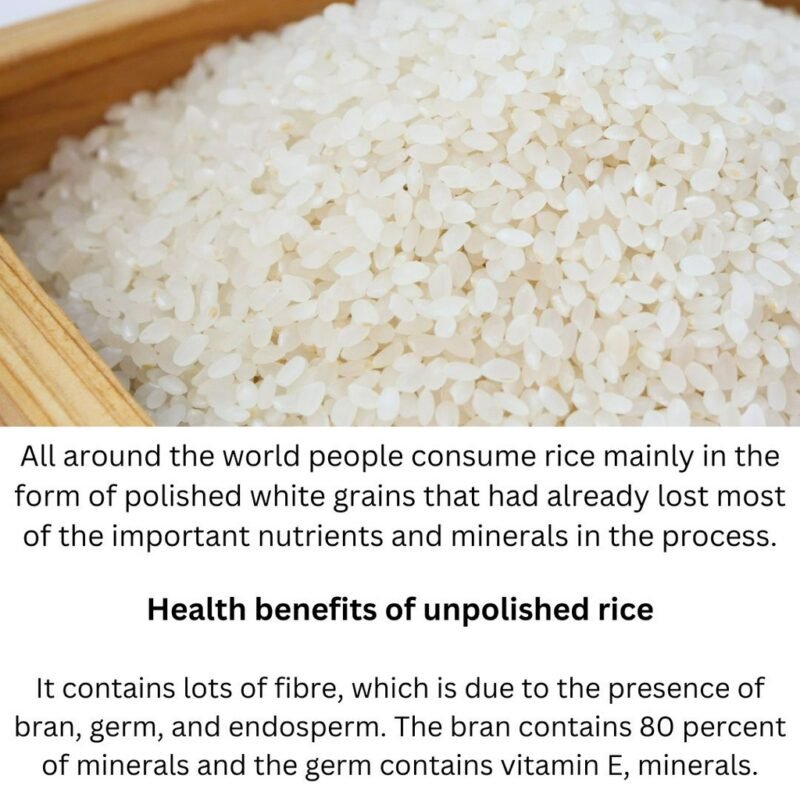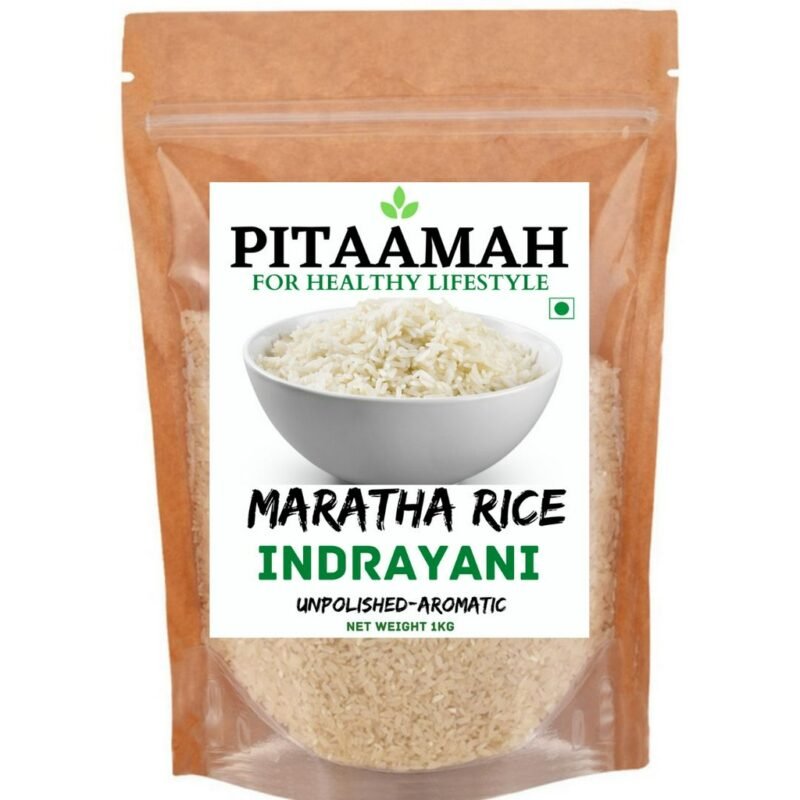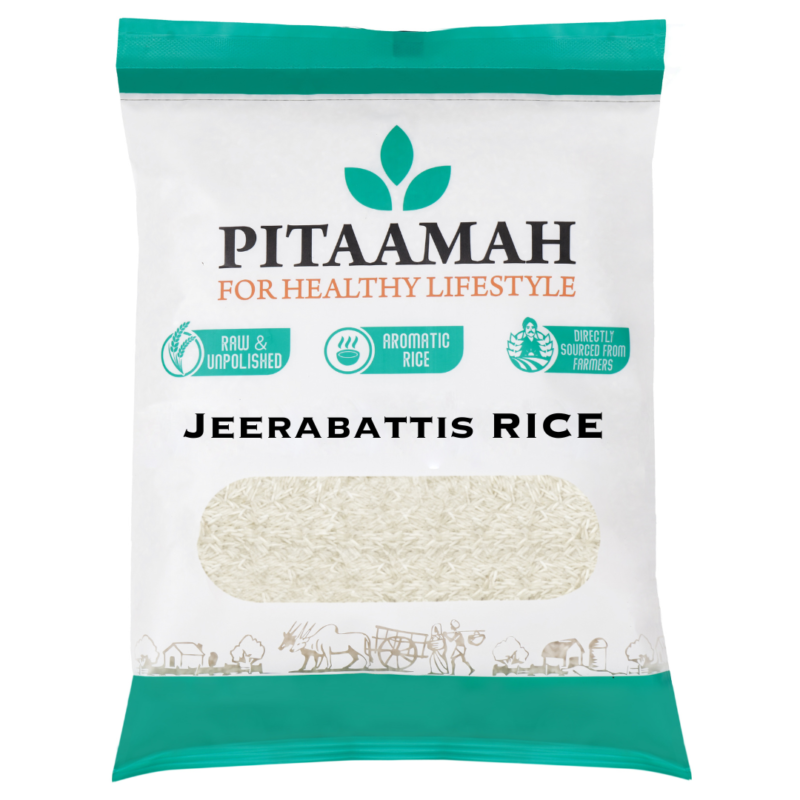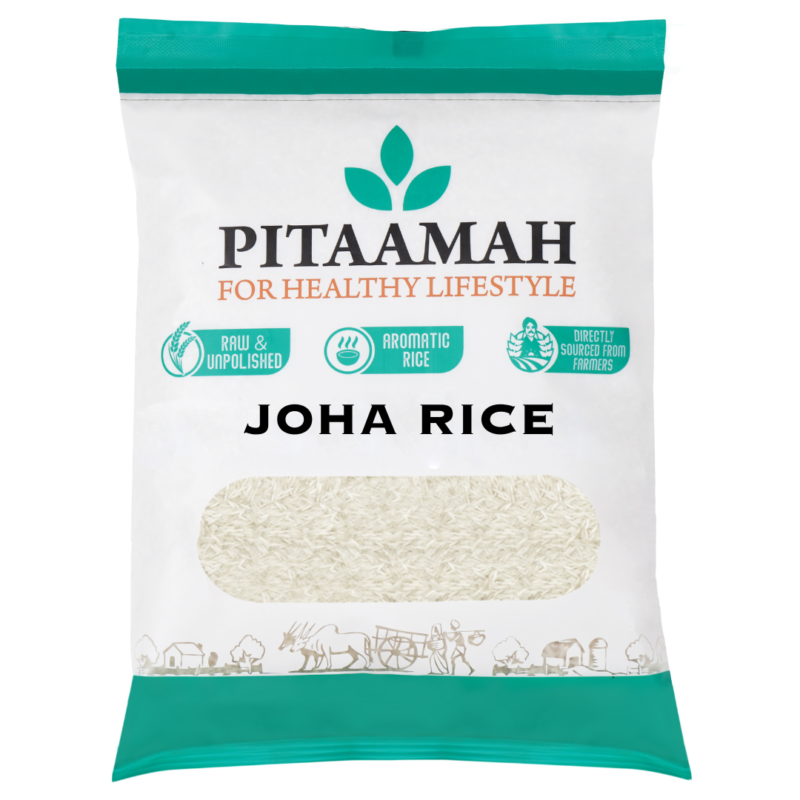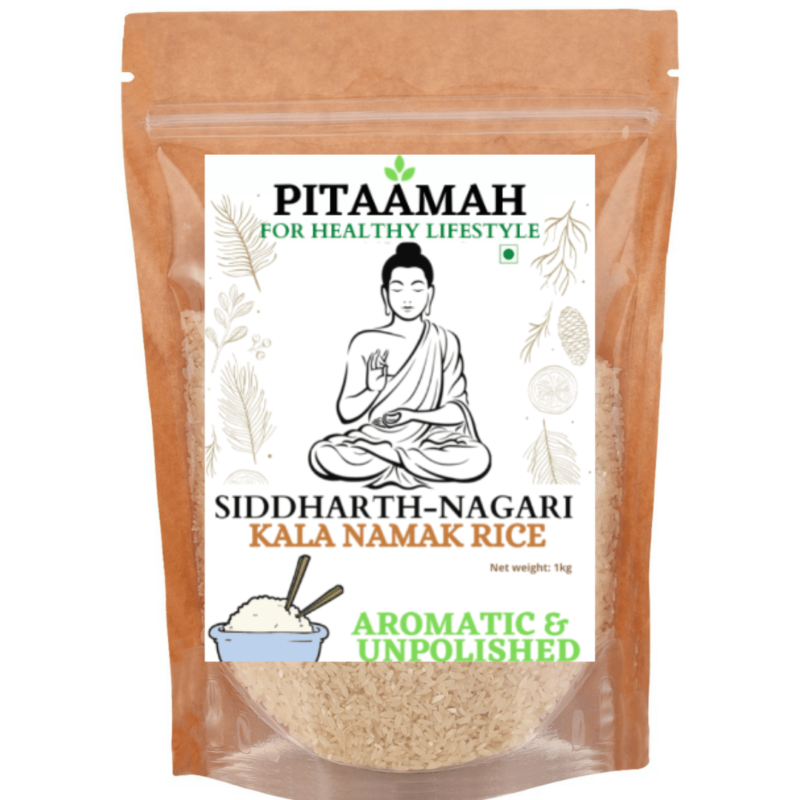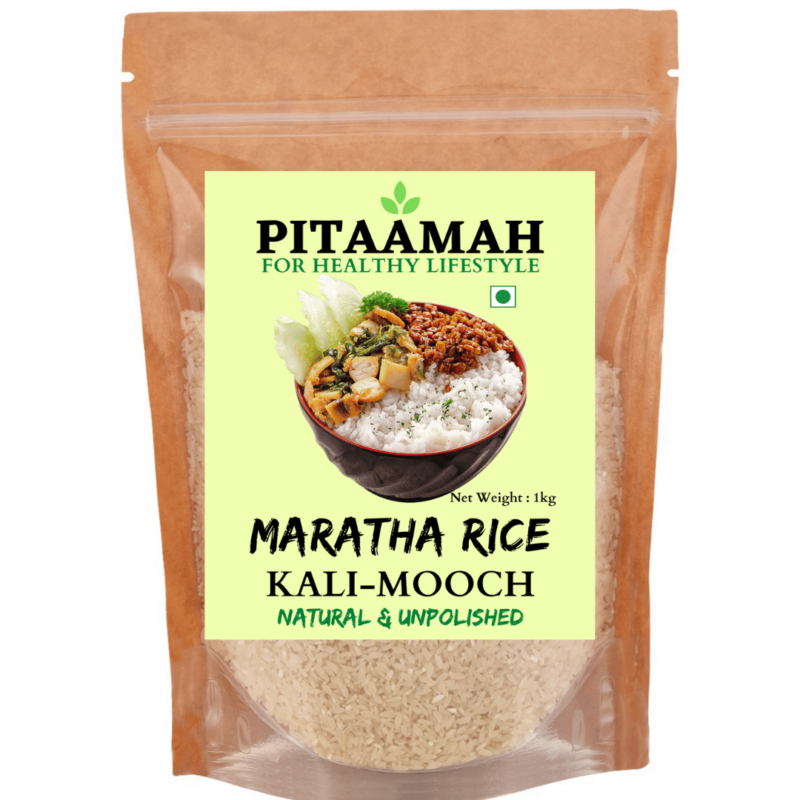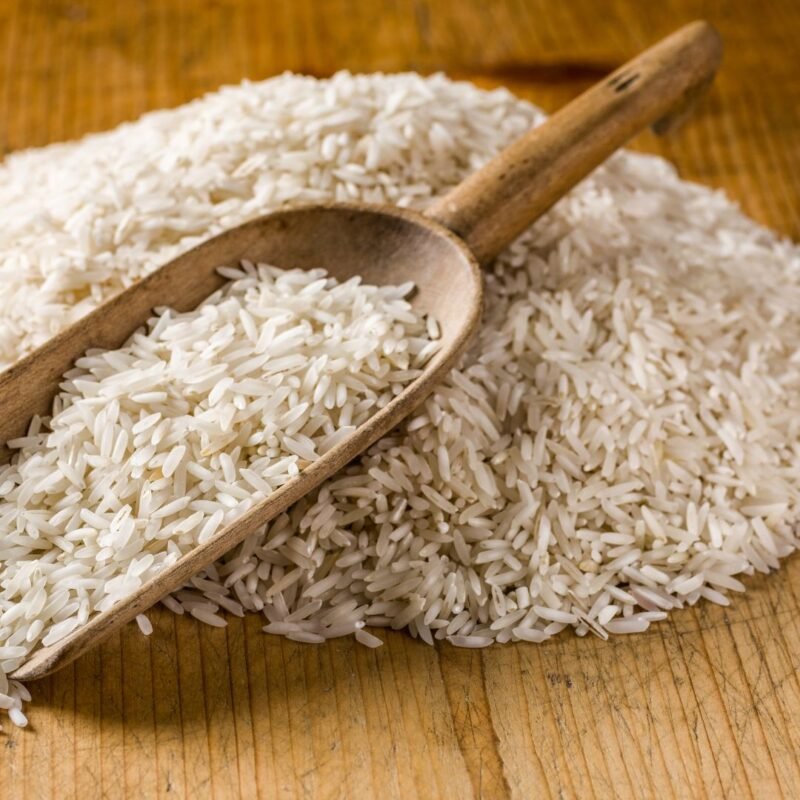
Table of Contents
Overview of Pitaamah Brown Rice with Sona Masoori
Pitaamah Brown, unpolished A nutritious, nutrient-rich grain with many health advantages is sona masoori rice. This unpolished rice has a higher nutritious value because it hasn’t been polished and still has its natural bran layer. When it comes to adding additional fibre, vitamins, and minerals to meals in a time when eating healthily is becoming more popular, unpolished rice is a great choice.
The History and Origins of Sona Masoori Rice
A popular medium-grain rice type in southern India is called Sona Masoori rice. It has long been a mainstay in traditional Indian homes. Two rice kinds, Sona and Masoori, were crossed to produce this special strain of rice, which is where the name “Sona Masoori” originates. Sona Masoori rice is praised for its adaptability and lightness. It is known for its delicate flavour and somewhat nutty scent.
What Separates Polished from Unpolished Rice
The outer bran layer of unpolished Pitaamah Brown Sona Masoori Rice, which is kept throughout processing, is what makes it unique. Conversely, this layer is removed from polished rice, depriving it of vital nutrients. Because unpolished rice keeps more of its fibre, vitamins, and minerals, it is the better option for people who are concerned about their health.
Pitaamah Brown Sona Masoori Rice: Why Choose It?
Pitaamah Brown Sona Masoori Rice is distinguished by its superior quality and emphasis on purity. It’s a great option for anyone who value eating healthful, natural foods. With their firm texture and nutty flavour, the unpolished, natural grains are ideal for a range of recipes, from straightforward stir-fries and curries to more elaborate rice bowls.
Pitaamah Brown Sona Masoori Rice Nutrition Facts
Pitaamah Brown Sona Masoori Rice, abundant in fibre, magnesium, manganese, and phosphorus, is a nutritional powerhouse. Antioxidants and vitamins B1, B2, and B3 are also present, which are crucial for sustaining energy levels and bolstering the body’s metabolism. It’s a wonderful option for diabetics and anyone controlling their weight because of its greater fibre content, which also helps with digestion and blood sugar regulation.
The Health Advantages of Raw Brown Rice
Eating unpolished brown rice has several health benefits, one of which is that it improves heart health. Because of its high fibre content, there is a decreased risk of heart disease due to lowered cholesterol levels. Furthermore, unpolished brown rice helps you lose weight by reducing overeating and keeping you satiated for longer.
The Crop Process of Pitaamah Brown Sona Masoori Rice
Pitaamah takes pleasure in growing its Brown Sona Masoori Rice using sustainable farming methods. This rice is produced using environmentally responsible practices that are considerate of both the environment and the end user. It is grown organically without the use of hazardous pesticides or fertilisers. This guarantees that the rice you eat is healthy for the environment as well as for you.
The flavour and texture of Pitaamah Brown Sona Masoori rice
Pitaamah Brown Sona Masoori Rice has a light nutty flavour and a chewy texture that makes it both pleasant and adaptable. It has a distinct earthy flavour that enhances a variety of foods. Whether you’re making a simple rice bowl or a more sophisticated dish like biryani, this rice adds a level of complexity to your meals that polished rice cannot match.
Cooking Instructions for Pitaamah Brown Sona Masouri Rice
Cooking unpolished rice takes a little more care and patience than polishing rice. Start by soaking the rice for at least 30 minutes before cooking to soften the grains and shorten the cooking time. Use a 2:1 water-to-rice ratio and cook over low heat until the grains are soft. Remember to fluff the rice with a fork before serving to separate the grains.
Using Pitaamah Brown Sona Masoori Rice in Daily Meals
Looking for ways to include Pitaamah Brown Sona Masoori Rice in your meals? Start your day with a hearty rice porridge, or include it into your lunch salad for a nutritious twist. For dinner, it goes well with stir-fries, curries, and grilled veggies.
Comparing Pitaamah Brown Sona Masoori Rice and Other Types of Brown Rice
Pitaamah Brown Sona Masoori Rice differs from other brown rice kinds, such as Basmati and Jasmine. While Basmati is long-grained and aromatic, and Jasmine is noted for its slightly sticky texture, Sona Masoori is medium-grained and lighter in flavour, making it suitable for a wide range of cuisines.
Pitaamah sona masoori Rice – Unpolished & Aromatic Rice
Unpolished Pitaamah Jasmine Rice | Aromatic & Sticky Rice
Environmental Impact of Selecting Pitaamah Brown. Sona Masouri Rice
Choosing Pitaamah Brown Sona Masoori Rice promotes sustainable agriculture while reducing the environmental impact of food production. By choosing organically farmed rice, you are supporting environmentally beneficial farming techniques and helping to a healthier Earth.
Buying and Storing Pitaamah Brown Sona Masoori Rice
Pitaamah Brown Sona Masoori Rice is available in select stores and online. To keep it fresh, store it in a cold, dry location in an airtight container. Proper storage protects the rice from moisture and bugs, increasing its shelf life.
Conclusion
In conclusion, Pitaamah Brown Sona Masoori Rice is an excellent alternative for anyone trying to eat better without compromising flavour. Its unpolished form provides several nutritional benefits, making it an essential component of a well-balanced diet. By selecting this rice, you are not only nourishing your body, but also promoting sustainable farming practices.
FAQs
Is unpolished brown rice superior to white rice?
Yes, unpolished brown rice contains more minerals and fibre than white rice, making it a better choice.
How long does it take to cook unpolished brown rice?
It takes roughly 35-45 minutes to cook unpolished brown rice, depending on whether you soak it first.
Can Pitaamah Brown Sona Masoori Rice help you lose weight?
Yes, its high fibre content can induce feelings of fullness, which may help with weight management.
Is Brown Rice Gluten-Free?
Yes, brown rice is naturally gluten-free, making it a safe choice for people with gluten intolerance or coeliac disease.
What is the shelf life of Pitaamah Brown Sona Masoori Rice?
When kept correctly in a cold, dry environment, it can last up to 12 months.
Authentic Pitaamah ShakkarChini Rice – Unpolished and Aromatic
Buy Pitaamah Sonachur Rice – Available in Various Sizes | Traditionally Milled & Unpolished
Buy Telangana Sona Rice Online
Buy VishnuBhog Rice from pitaamah Online | Unpolished & Aromatic | Shop Rice Online
Fresh Pitaamah Unpolished Gobindobhog Rice Online in India
Pitaamah AmbeMohar Rice Online at Best Prices | Unpolished Pitaamah AmbeMohar Rice
Pitaamah Indrayani Rice Delivered Across India| Pitaamah Indrayani Rice Direct from farmer
Pitaamah Jeera battis Rice -Unpolished & Aromatic
Pitaamah Joha Rice – Unpolished & Aromatic Rice
Pitaamah Kala Namak Rice | healthy & Low GI Rice | GI Tag | Buddha Rice
Benefits of Kala Namak Rice:
- Rich in Antioxidants: Contains high levels of antioxidants, which promote overall health and protect against oxidative stress.
- Good Source of Iron and Zinc: Supports immune function and helps prevent anemia.
- High Nutritional Value: Packed with essential nutrients and vitamins, making it a healthier option than regular white rice.
- Easily Digestible: Light on the stomach and easy to digest, making it ideal for everyday consumption.
- Unique Aroma and Flavor: Its distinctive aroma enhances the taste of traditional dishes like pulao, biryani, and festive rice preparations.
Characteristics of Kala Namak Rice
-
Color: Black husk with white grain inside.
-
Aroma: Naturally aromatic, stronger than Basmati.
-
Taste: Mildly sweet with a nutty flavor.
-
Length: Medium-grain rice (not as long as basmati).
-
Cultivation: Traditionally grown in the Gangetic plains with organic practices.
Health Benefits of Kala Namak Rice
-
Rich in Iron & Zinc – Helps improve hemoglobin levels.
-
High Antioxidant Content – Strengthens immunity.
-
Low Glycemic Index – Suitable for diabetics.
-
Easily Digestible – Good for children and elderly.
-
Gluten-Free – Ideal for people with gluten intolerance.
Culinary Uses of Kala Namak Rice
-
Steamed Rice – Its aroma enhances daily meals.
-
Pulao & Biryani – Provides a unique taste compared to basmati.
-
Kheer (Rice Pudding) – Popular in traditional households.
-
Buddha Rice Recipes – Used in wellness and organic diets worldwide.
-
Why Kala Namak Rice is Special?
-
-
How to cook Kala Namak Rice | Pitaamah Unique & Healthy Rice #ricerecipe #indianrice #indiancooking
-
GI Tag (Geographical Indication): Kala Namak rice has been awarded the GI tag, making it an exclusive heritage rice of Uttar Pradesh.
-
Global Recognition: It is often called “Buddha Rice” internationally.
-
Sustainable Farming: Traditionally grown without harmful chemicals.
How to Cook Kala Namak Rice (Quick Method)
-
Wash the rice 2-3 times.
-
Soak for 20 minutes.
-
Cook with 1:2 water ratio.
-
Allow it to rest for 5 minutes after cooking.
Kala Namak Rice – The Aromatic Heritage Grain of India
Kala Namak Rice (also known as Buddha Rice) is one of India’s oldest and rarest varieties of rice, grown mainly in the Terai region of Uttar Pradesh (Siddharthnagar, Basti, Gorakhpur, Sant Kabir Nagar, etc.). This traditional rice is famous for its unique aroma, black husk, rich nutritional value, and historical significance.
Origin & History of Kala Namak Rice
-
Believed to be over 2,500 years old, Kala Namak rice has a strong cultural connection with Lord Buddha.
-
Historical texts mention that Lord Buddha gifted this rice to his followers as a symbol of peace and health.
-
The name “Kala Namak” comes from its black husk (kala = black) and its mild salty taste (namak = salt).
-
-

